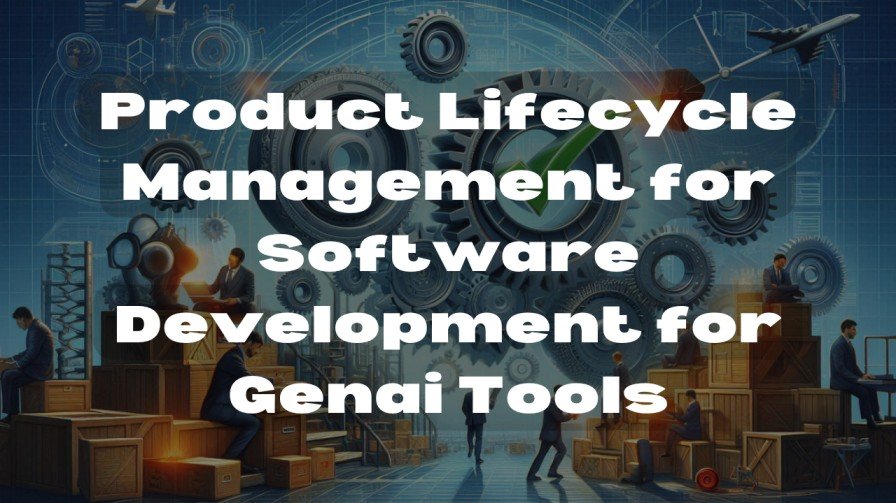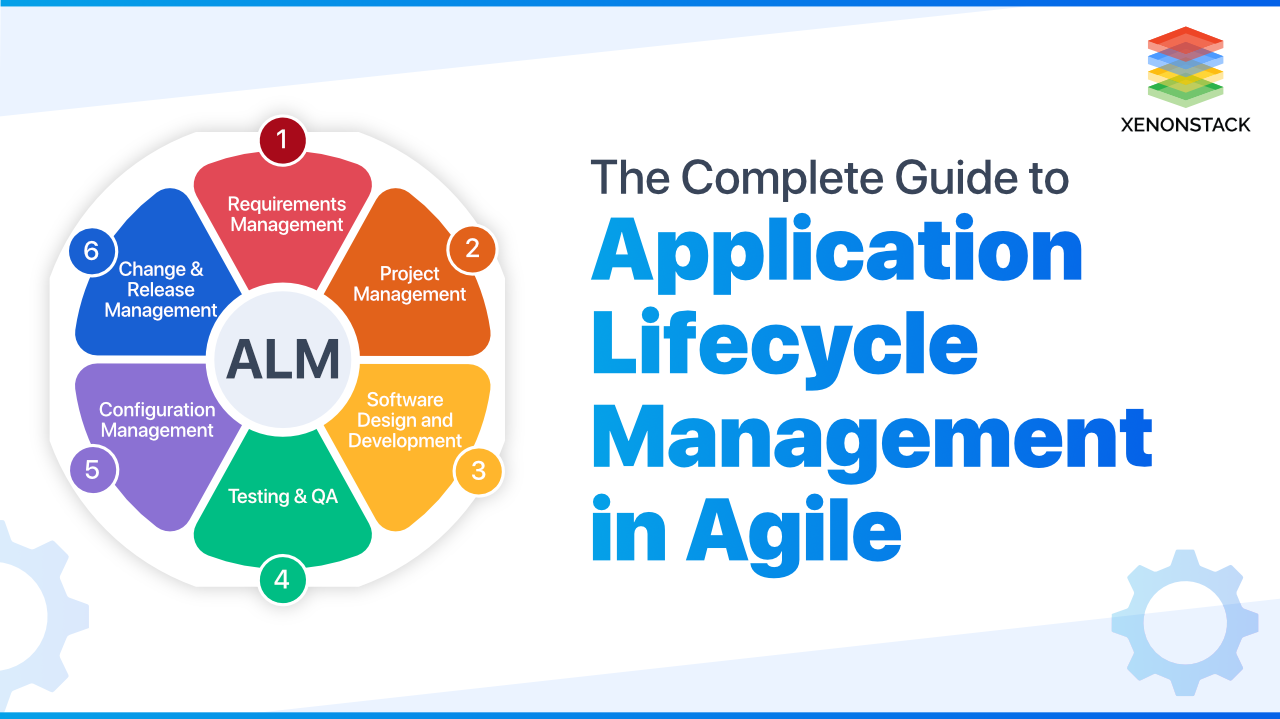Product Lifecycle Management (PLM) for software development involves managing the complete lifecycle of a software product. GenAI tools enhance this process by automating tasks and improving efficiency.
In software development, Product Lifecycle Management (PLM) is crucial for overseeing the entire journey of a software product from inception to retirement. With the advent of GenAI tools, this process is revolutionized. GenAI tools automate repetitive tasks, enhance collaboration among teams, and provide predictive analytics.
These tools streamline workflows, minimize errors, and accelerate time-to-market. They also facilitate better decision-making by providing real-time insights. As a result, software development teams can focus more on innovation and less on administrative tasks. Adopting GenAI tools in PLM ensures a more efficient, agile, and effective development process, leading to higher quality software products.

Stages Of Product Lifecycle
Product Lifecycle Management for Software Development for Genai Tools involves a series of stages that ensure the successful creation, deployment, and maintenance of software products. Understanding these stages is crucial for delivering high-quality software that meets user needs and market demands. This guide explores the Stages of Product Lifecycle in detail.
Planning Phase
The Planning Phase is the cornerstone of product lifecycle management for software development for Genai tools. This phase involves defining the product’s vision, goals, and roadmap. Key activities include:
- Market Research: Understanding market needs and trends.
- Requirement Gathering: Collecting user requirements and expectations.
- Feasibility Study: Assessing technical and financial viability.
- Project Planning: Developing a comprehensive project plan that includes timelines and key milestones..
During this phase, teams use various tools and techniques like SWOT analysis, user personas, and Gantt charts to ensure comprehensive planning. Effective planning sets the foundation for the subsequent stages and helps in mitigating risks early on.
Development Phase
The Development Phase is where the actual coding and creation of the software take place. This phase involves:
- Design: Creating the architecture and user interface designs.
- Coding: Writing the code based on design specifications.
- Unit Testing: Testing individual components for functionality.
- Integration: Combining all modules and ensuring they work together.
Development teams use various programming languages, frameworks, and tools to build the software. Agile methodologies and continuous integration practices are often employed to ensure efficient and iterative development. Proper documentation and code reviews are essential to maintain quality and consistency.
Deployment Phase
The Deployment Phase entails delivering the software to users for release. Key steps include:
- Pre-Deployment Testing: Conducting final tests to ensure the software is ready for release.
- Environment Setup: Preparing the production environment.
- Deployment: Installing the software on user systems or servers.
- Post-Deployment Monitoring: Monitoring the software for any issues or bugs.
Automated deployment tools and continuous deployment practices can streamline this phase. Effective deployment ensures that the software reaches users smoothly and functions as intended.
Maintenance Phase
The Maintenance Phase is essential for ensuring the software’s long-term stability and success. Activities include:
- Bug Fixes: Addressing any issues reported by users.
- Updates: Releasing regular updates to improve functionality and security.
- Performance Monitoring: Continuously monitoring the software’s performance.
- Customer Support: Providing support to users for any queries or issues.
This phase ensures that the software remains relevant and efficient over time. Regular updates and proactive maintenance help in retaining user satisfaction and trust.
Credit: aimresearch.co
Key Challenges
Product Lifecycle Management for Software Development for Genai Tools involves overseeing the entire process of software creation, from inception to end-of-life. This holistic approach ensures that every stage is meticulously managed, aligning with organizational goals. Yet, several key challenges can hinder the smooth implementation and success of PLM in software development.
Rapid Technological Change
Technological change happens swiftly and continuously. This rapid pace can complicate product lifecycle management for software development for genai tools. Developers need to stay updated with the latest trends and advancements. Falling behind can lead to outdated tools and inefficient processes.
Consider the following challenges:
- Keeping Up with Innovation: New programming languages, frameworks, and tools emerge often. Staying updated requires continuous learning.
- Compatibility Issues: Integrating new technologies with existing systems can be difficult and time-consuming.
- Cost Implications: Adopting new technology often involves financial investments. This can strain budgets and resources.
The table below highlights how rapid technological change impacts different stages of the software lifecycle:
| Lifecycle Stage | Impact of Technological Change |
|---|---|
| Development | Need for new tools and languages |
| Testing | Adapting to new testing frameworks |
| Deployment | Ensuring compatibility with latest platforms |
Integration With Existing Systems
Integrating new tools with existing systems can pose significant challenges. This is crucial in product lifecycle management for software development for genai tools. Legacy systems may not easily adapt to new software, leading to compatibility issues and workflow disruptions.
Key challenges include:
- Compatibility: Ensuring new software works seamlessly with old systems is vital. Incompatibility can result in data loss or system failures.
- Data Migration: Transferring data from old systems to new tools is a complex process. It requires meticulous planning and execution.
- Security Risks: Integrating new systems can expose vulnerabilities. Robust security measures are essential to protect data.
The table below outlines potential integration issues and their solutions:
| Issue | Solution |
|---|---|
| Data Incompatibility | Use data transformation tools |
| System Downtime | Plan integration during off-peak hours |
| Security Breaches | Implement robust security protocols |
Team Collaboration
Effective team collaboration is crucial in product lifecycle management for software development for genai tools. Teams need to collaborate effectively to guarantee the project’s success. However, several challenges can impede collaboration efforts.
Primary challenges include:
- Communication Barriers: Remote work and different time zones can hinder communication. Establishing clear and consistent communication channels is vital.
- Coordination: Keeping everyone on the same page is vital. Leverage project management tools to oversee tasks and monitor progress.
- Skill Gaps: Team members may have varying skill levels. Regular training and skill development programs can bridge these gaps.
Strategies to enhance team collaboration:
- Regular Meetings: Schedule regular check-ins and meetings to discuss progress and address issues.
- Use Collaboration Tools: Utilize tools like Slack, Trello, or Asana to streamline communication and task management.
- Foster a Collaborative Culture: Encourage open communication, knowledge sharing, and teamwork.
By addressing these challenges, teams can work more effectively, ensuring the success of product lifecycle management for software development for genai tools.
Tools And Technologies
Product lifecycle management for software development for GenAI tools involves a variety of tools and technologies that ensure seamless integration and management. Utilizing the right tools can significantly enhance the efficiency of the development process, from initial concept to final deployment. Understanding these tools and technologies is crucial for any team aiming to optimize their workflow and deliver high-quality software solutions.
Plm Software Solutions
Product lifecycle management for software development for GenAI tools requires robust PLM software solutions. These solutions help manage every stage of the software lifecycle, ensuring teams stay on track and meet their goals.
Here are some key features:
- Version Control: It is critical to manage and track different versions of the software.
- Collaboration Tools: Enable seamless teamwork across different departments.
- Requirement Management: Ensures all client and stakeholder requirements are met.
- Risk Management: Detects and addresses potential risks early in the development process to minimize impact.
Popular PLM software solutions include:
| Software | Features |
|---|---|
| PTC Windchill | Advanced version control, robust collaboration tools, and comprehensive risk management. |
| Siemens Teamcenter | Strong requirement management, extensive collaboration features, and effective risk mitigation. |
| Autodesk Fusion Lifecycle | Cloud-based solutions, easy integration, and customizable workflows. |
Using these PLM software solutions, teams can streamline their processes, reduce errors, and improve overall productivity.
Genai Integration Tools
GenAI integration tools play a pivotal role in product lifecycle management for software development for GenAI tools. These tools enable the integration of artificial intelligence into various stages of the software lifecycle.
Key functionalities include:
- Data Analysis: AI tools process large volumes of data to deliver valuable, actionable insights.
- Automation: Automate repetitive tasks to free up valuable time for developers.
- Predictive Maintenance: Detect potential problems early to prevent them from becoming critical.
- Customization: Tailor AI solutions to specific project requirements.
Popular GenAI integration tools are:
| Tool | Features |
|---|---|
| IBM Watson | Advanced data analysis, robust automation, and seamless integration. |
| Google AI Platform | Scalable solutions, comprehensive data management, and powerful predictive analytics. |
| Microsoft Azure AI | Extensive customization, reliable automation, and strong security features. |
By leveraging these GenAI integration tools, development teams can enhance their efficiency, improve accuracy, and deliver high-quality software products.

Credit: theproductmanager.com
Best Practices
Product Lifecycle Management for Software Development for Genai Tools involves a series of best practices to ensure efficiency and success. By following these best practices, teams can streamline processes, improve productivity, and deliver high-quality software. Below, we discuss two critical best practices: Agile Methodologies and Continuous Feedback Loops.
Agile Methodologies
Agile Methodologies are essential in product lifecycle management for software development for Genai Tools. Agile emphasizes iterative development, allowing requirements and solutions to evolve through continuous collaboration.
Key components of Agile include:
- Iterative Development: Development occurs in small, manageable increments, allowing for regular adjustments.
- Collaboration: Teams work closely with stakeholders, ensuring alignment with business goals.
- Flexibility: Agile allows for changes in requirements, even late in development.
Agile frameworks like Scrum and Kanban are widely used:
| Framework | Key Features |
|---|---|
| Scrum | Time-boxed sprints, daily stand-ups, sprint reviews, and retrospectives. |
| Kanban | Visual workflow management, continuous delivery, and work-in-progress limits. |
Adopting Agile Methodologies helps teams to be more adaptive and responsive, leading to better project outcomes.
Continuous Feedback Loops
Continuous Feedback Loops are crucial in product lifecycle management for software development for Genai Tools. Feedback loops ensure ongoing improvement and alignment with user needs.
Key elements of Continuous Feedback Loops include:
- User Feedback: Continuously collect user feedback to gain insight into their needs and preferences.
- Automated Testing: Implement automated tests to catch issues early and ensure quality.
- Code Reviews: Conduct peer reviews to maintain code quality and share knowledge.
Feedback loops can be integrated at various stages:
| Stage | Feedback Mechanism |
|---|---|
| Development | Automated tests, code reviews |
| Testing | Beta testing, user acceptance testing |
| Deployment | Monitoring, user feedback |
By implementing Continuous Feedback Loops, teams can detect and address issues promptly, ensuring the software meets user expectations and achieves high quality.
Case Studies
Product Lifecycle Management for software development for Genai tools plays a crucial role in ensuring efficient and effective creation, deployment, and maintenance of software products. By examining various case studies, we can gain valuable insights into how different companies have successfully implemented these management strategies, as well as the lessons they have learned along the way.
Successful Implementations
Several companies have excelled in implementing product lifecycle management for software development for Genai tools. These successful implementations highlight best practices and innovative strategies that can be applied in various contexts.
One notable example is Tech Innovators Inc. They adopted a comprehensive product lifecycle management system to streamline their software development process. Key elements of their success include:
- Automated Testing: Reduced manual testing efforts by 50%, ensuring faster release cycles.
- Real-time Collaboration: Enabled seamless communication among global development teams, improving code quality.
- Integrated Feedback Loops: Incorporated user feedback early in the development phase, leading to higher customer satisfaction.
Another example is Creative Solutions Ltd. Their approach focused on integrating Genai tools with their existing development infrastructure. This integration resulted in:
| Metric | Before Implementation | After Implementation |
|---|---|---|
| Development Time | 6 months | 4 months |
| Bug Rate | 15% | 5% |
| Customer Satisfaction | 70% | 90% |
These case studies demonstrate that a well-implemented product lifecycle management strategy can significantly enhance software development outcomes for Genai tools.
Lessons Learned
Through these implementations, several lessons have been learned that are invaluable for others looking to adopt product lifecycle management for software development for Genai tools.
One key lesson is the importance of stakeholder involvement. Companies that engaged their stakeholders from the early stages reported smoother transitions and higher adoption rates. Effective stakeholder engagement can be accomplished through clear communication, active involvement, and regular updates:
- Regular updates and meetings
- Requesting feedback and integrating it into the development process to drive improvements
- Offering training and assistance to simplify the transition process
Another critical lesson is the need for adaptability. Flexibility in adapting to new tools and processes was crucial for success. Companies that remained rigid faced challenges in implementation. Key adaptability strategies include:
- Continuous Learning: Encouraging teams to stay updated with the latest Genai tools and technologies.
- Iterative Development: Adopting agile methodologies to allow for adjustments based on ongoing feedback.
- Scalability: Ensuring that the management system can scale with the company’s growth and changing needs.
Lastly, the significance of data-driven decision-making cannot be overstated. Companies that relied on data analytics to guide their strategies saw better outcomes. This involves:
- Tracking key performance metrics
- Using predictive analytics to foresee potential issues
- Making well-informed decisions by leveraging thorough data analysis
These lessons provide a roadmap for others to follow, ensuring that the implementation of product lifecycle management for software development for Genai tools is both effective and efficient.

Credit: www.xenonstack.com
Future Trends
Product Lifecycle Management for Software Development for Genai Tools is constantly evolving. Future trends are shaping the way developers manage software products from inception to retirement. These trends are driven by technological advancements and changing market demands. Let’s delve into some of these emerging trends.
Ai-driven Plm
AI-Driven PLM is revolutionizing product lifecycle management for software development for Genai tools. AI algorithms automate repetitive tasks, reducing human error and increasing efficiency. Here are some key benefits:
- Automated Task Management: AI can handle tasks like bug tracking, code reviews, and deployment scheduling.
- Predictive Analytics: AI provides insights into potential issues before they become critical.
- Resource Optimization: AI optimizes resource allocation, ensuring that projects stay on track.
Consider the following table showcasing AI-driven PLM features and their benefits:
| Feature | Benefit |
|---|---|
| Automated Task Management | Reduces manual effort and errors |
| Predictive Analytics | Identifies issues early |
| Resource Optimization | Ensures efficient use of resources |
AI-driven PLM is not just about automation. It also enhances collaboration among teams. AI tools provide real-time data, enabling better decision-making. Developers can focus on creative tasks, leaving mundane activities to AI.
Evolving Genai Tools
Evolving GenAI Tools are transforming product lifecycle management for software development for Genai tools. These tools are becoming more sophisticated, offering advanced features that enhance productivity and innovation. Some of the latest trends include:
- Natural Language Processing (NLP): GenAI tools now understand and process human language, making interactions more intuitive.
- Automated Code Generation: Tools can now generate code snippets based on user inputs, speeding up development.
- Enhanced Testing Capabilities: GenAI tools offer automated testing, reducing the need for manual intervention.
Here’s a breakdown of these trends in a table:
| Trend | Impact |
|---|---|
| Natural Language Processing (NLP) | Improves user interaction |
| Automated Code Generation | Speeds up development |
| Enhanced Testing Capabilities | Reduces manual testing |
These evolving GenAI tools are making software development more efficient and innovative. Developers can leverage these tools to build better products faster. The future of product lifecycle management for software development for Genai tools looks promising with these advancements.
Frequently Asked Questions
What Is Product Lifecycle Management?
Product Lifecycle Management (PLM) is a process for managing a product’s lifecycle from inception to disposal. It integrates people, processes, and data. In software development, PLM ensures efficient development, deployment, and maintenance.
Why Use Plm In Software Development?
Using PLM in software development helps streamline workflows, improve collaboration, and enhance product quality. It ensures all team members have access to the latest information, reducing errors and delays.
How Does Plm Benefit Genai Tools?
PLM benefits GenAI tools by managing their development lifecycle efficiently. It enhances collaboration, reduces time-to-market, and ensures compliance with standards. This results in better-performing and reliable GenAI tools.
What Are Plm Stages In Software Development?
PLM stages in software development include ideation, design, development, testing, deployment, and maintenance. Each stage ensures the product meets quality standards and user requirements. Proper management of each stage optimizes the lifecycle.
Conclusion
Mastering Product Lifecycle Management is crucial for GenAI tool development. It ensures efficiency, quality, and adaptability. By implementing effective PLM strategies, software teams can innovate faster. This leads to enhanced user experiences and competitive advantages. Embrace PLM to stay ahead in the evolving tech landscape.
Start optimizing your software development process today.





1 thought on “Product Lifecycle Management for Software Development for Genai Tools: Boost Innovation”